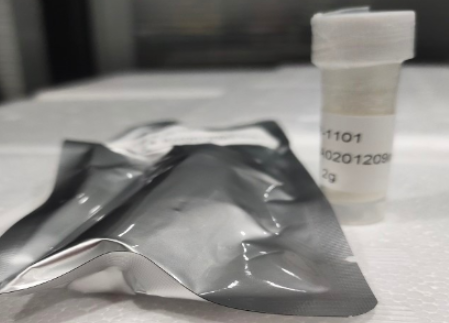文献:Prostate cancer targeted magnetic resonance imaging nanoprobes based on polyethylene glycol polyethyleneimine and superparamagnetic iron oxide
作者:周建华,黄绿,王伟伟,庞俊,邹艳,帅心涛,高新
文献链接:https://xueshu.baidu.com/usercenter/paper/show?paperid=c51dc88dae42acd9da7f55aeefd5bfbf&site=xueshu_se
摘要:
A water-soluble copolymer of polyethylene glycol grafted polyethyleneimine (mPEG-g-PEI) was obtained by grafting branched polyethyleneimine (hy PEI) onto monomethyl ether polyethylene glycol (mPEG-OH). Superparamagnetic iron oxide nanoparticles (SPIO) were encapsulated by ligand exchange, and then functionalized polyethylene glycol (mal PEG COOH) was combined with activated prostate stem cell antigen (PSCA) monoclonal single chain antibody to obtain a targeted magnetic resonance imaging nanoprobe for prostate cancer cells Research has shown that the particle size of polyethylene glycol grafted polyethyleneimine (mPEI-g-PEG-SPIO) loaded with superparamagnetic iron oxide nanoparticles is about 50nm, which can significantly improve the specific delivery efficiency to prostate cancer cells, thereby significantly reducing the T2 signal intensity of magnetic resonance imaging (MRI) of prostate cancer cells and enhancing the recognition efficiency of prostate cancer. It may become a new nano probe for early diagnosis of prostate cancer MRI or a visible nucleic acid delivery carrier in gene therapy

采用单甲基醚聚乙二醇(mPEG-OH)接枝支化聚乙烯亚胺(hy-PEI),得到水溶性共 聚物聚乙二醇接枝聚乙烯亚胺(mPEG-g-PEI),通过配体交换的方法包裹超顺磁性四氧化三铁纳米粒子(SPIO),再通过功能化的聚乙二醇 (mal-PEG-COOH)与活化的前列腺干细胞抗原(PSCA)单克隆单链抗体结合,获得前列腺*细胞靶向核磁共振显像纳米探针.研究表明,负载超顺 磁性四氧化三铁纳米粒子的聚乙二醇接枝聚乙烯亚胺(mPEI-g-PEG-SPIO)的粒径约为50nm,能显著提高对前列腺*细胞的特异性输送效率,从 而显著地降低前列腺*细胞的核磁共振成像(MRI)T2信号强度,增强对前列腺*的识别效率,有可能成为一种前列腺*MRI早期诊断新型纳米探针或者基因 治疗中一种MRI可见的核酸输送载体.
相关推荐:
PEI-PEG-SH
PEI-PEG-cRGD
PEI-PLGA
PEI-PLA
PEI-PCL
PEI Hyaluronate (PEI-HA)
PEI-Dextran
PEI-Chitosan
mPEG-PCL-PEI
X-PEI-Y
以上文章内容来源各类期刊或文献,如有侵权请联系我们删除!




 齐岳微信公众号
齐岳微信公众号 官方微信
官方微信 库存查询
库存查询